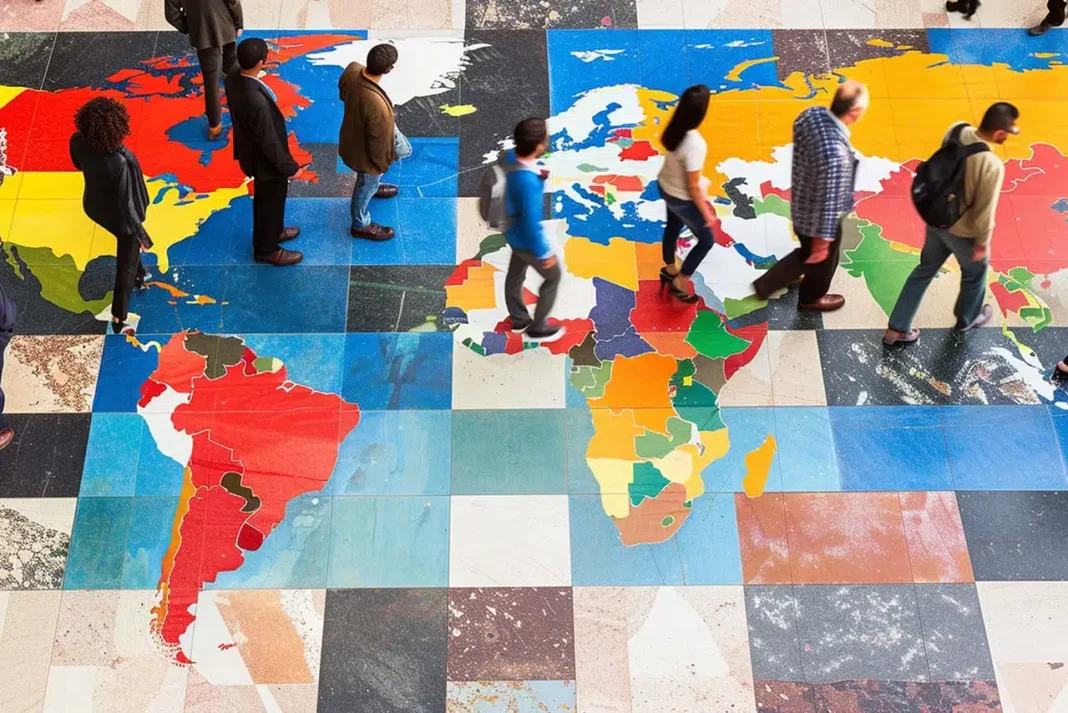Migration is much more than simply moving to a different city or country. This process profoundly changes a person’s life and brings with it many challenges. Adapting to a new culture, maintaining economic stability, overcoming language barriers, and rebuilding social relationships are among the most common difficulties faced by migrants. All these circumstances create psychological strain and may sometimes push individuals toward unhealthy coping strategies. One such strategy is addiction.
Addiction refers to the inability to control the repeated use of a substance or behavior. Stress, loneliness, and identity confusion are among the main factors that trigger addiction. For migrants, these factors are often experienced more intensely (Bhugra, 2004). Therefore, the link between migration and addiction is an important area of focus for psychologists.
1. Psychological Reflections of Migration
During migration, individuals leave behind familiar surroundings and are forced to adapt to a new society. This often results in a lack of “social support.” Not knowing the language, struggling to adapt to different cultural norms, and experiencing exclusion can lead to feelings of alienation (Berry, 1997).
Many migrants may experience anxiety, depression, or adjustment problems during this period. Particularly in the first years, intense feelings of loneliness and helplessness can emerge. From my perspective, this psychological strain makes individuals more vulnerable and can lead them to view substance use as a form of “escape.”
2. The Link Between Migration and Addiction
Research in many countries shows that although migrants often begin with relatively low levels of substance use, over time their usage rates increase, eventually matching or even surpassing those of the host population. The key concept here is “acculturative stress.” The strain of trying to adapt to a new society makes individuals more susceptible to risky behaviors.
For second-generation migrants, identity confusion becomes more evident. Young people may feel caught between the cultural values of their families and the expectations of the society they grow up in. This conflict undermines their sense of belonging and increases the likelihood of turning to addictive behaviors (Zhou, 1997). During adolescence in particular, migrant youth may begin using alcohol or drugs as a way to gain acceptance in peer groups (Sussman & Ames, 2008).
3. Trauma, Loss, and Addiction
Migration is not always the result of voluntary choice. Forced migration due to war, violence, or political oppression can cause severe trauma. Such experiences significantly increase the risk of addiction in the post-migration period (Lustig et al., 2004).
Moreover, migration is not only a geographical departure; it also involves separation from family, profession, and social identity. These losses deepen feelings of helplessness. Substance use may then emerge as a tool to suppress or temporarily forget this pain. In psychotherapy, helping migrants process their grief and loss in a healthy way is of great importance.
4. Protective Factors and Psychological Support
Although there is a strong relationship between migration and addiction, not every migrant is exposed to the same level of risk. Family bonds, community solidarity, and the preservation of cultural identity serve as protective factors against addiction (Alegría et al., 2008). For example, migrants with strong community support tend to experience less loneliness and show lower tendencies toward addictive behaviors.
For psychologists, there are two critical points to consider. The first is providing counseling and psychological support services tailored to migrants’ needs. The second is cultural sensitivity. A migrant’s experiences are not limited to the post-migration period; past experiences must also be addressed in therapy. For this reason, a cross-cultural psychology perspective is essential.
In addition, integration programs—such as language courses, vocational training, and intercultural activities—are indirect yet powerful tools in preventing addiction. A stronger sense of belonging to society enhances psychological resilience.
5. Conclusion
Migration leaves deep marks on individuals’ lives and is closely related to addiction. Stress, trauma, identity conflict, and loneliness are key factors influencing the tendency of migrants to develop addictive behaviors. Nevertheless, strong social support systems, the preservation of cultural belonging, and accessible psychological support services are vital elements that reduce this risk.
For psychologists, this area of study is not limited to individual counseling but is also closely connected to social integration policies. Research and interventions on migration and addiction contribute not only to the well-being of individuals but also to more harmonious adaptation processes within host societies.
References
-
Alegría, M., Mulvaney-Day, N., Woo, M., Torres, M., Gao, S., & Oddo, V. (2008). Correlates of past-year mental health service use among Latinos: Results from the National Latino and Asian American Study. American Journal of Public Health, 97(1), 76–83.
-
Berry, J. W. (1997). Immigration, acculturation, and adaptation. Applied Psychology, 46(1), 5–34.
-
Bhugra, D. (2004). Migration and mental health. Acta Psychiatrica Scandinavica, 109(4), 243–258.
-
Kirmayer, L. J., & Minas, H. (2000). The future of cultural psychiatry: An international perspective. Canadian Journal of Psychiatry, 45(5), 438–446.
-
Lustig, S. L., Kia-Keating, M., Knight, W. G., Geltman, P., Ellis, H., Kinzie, J. D., … & Saxe, G. N. (2004). Review of child and adolescent refugee mental health. Journal of the American Academy of Child & Adolescent Psychiatry, 43(1), 24–36.
-
Silove, D., Ventevogel, P., & Rees, S. (2017). The contemporary refugee crisis: An overview of mental health challenges. World Psychiatry, 16(2), 130–139.
-
Sussman, S., & Ames, S. L. (2008). Drug abuse: Concepts, prevention, and cessation. Cambridge University Press.
-
Zhou, M. (1997). Segmented assimilation: Issues, controversies, and recent research on the new second generation. International Migration Review, 31(4), 975–1008.


